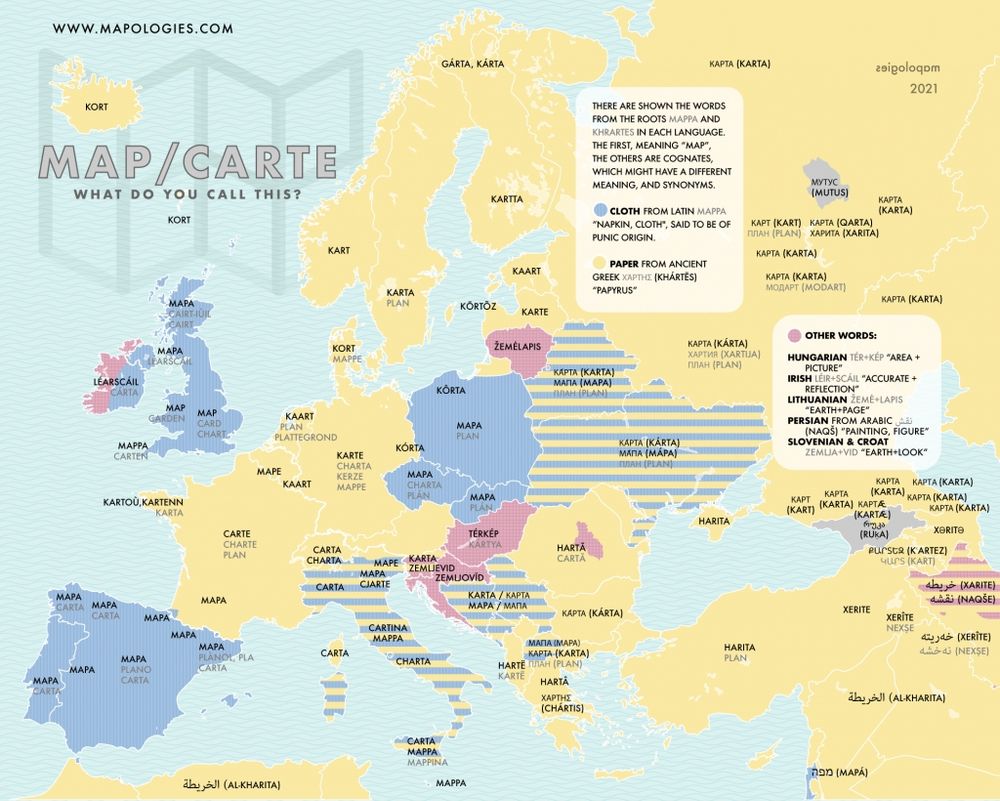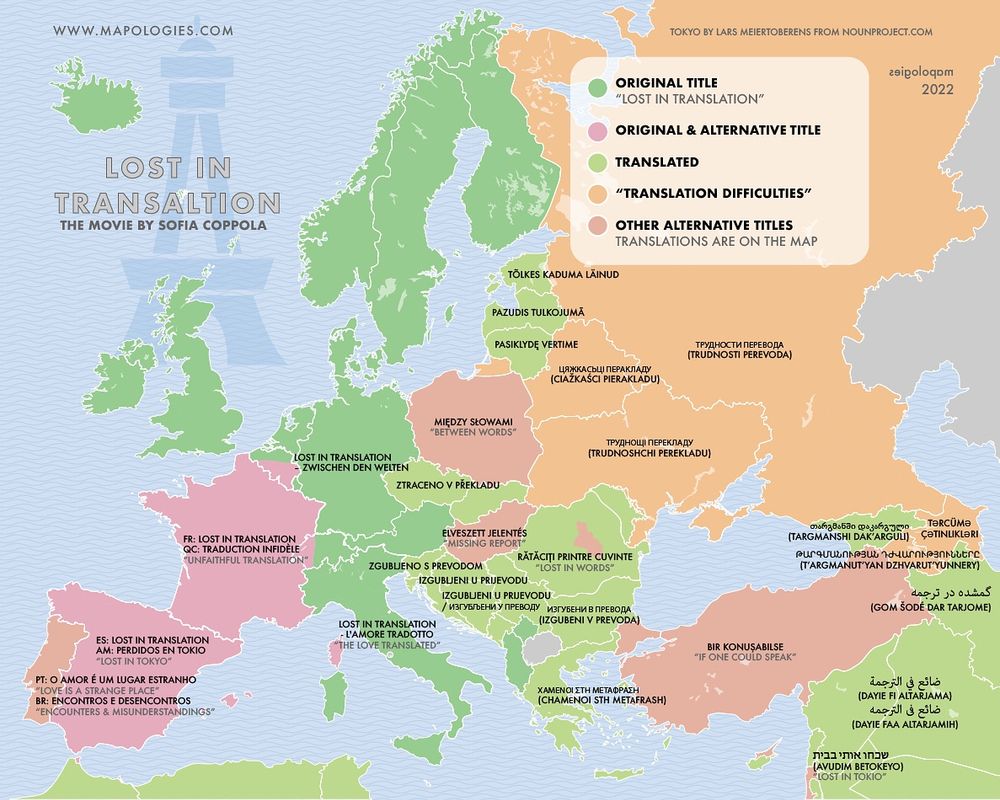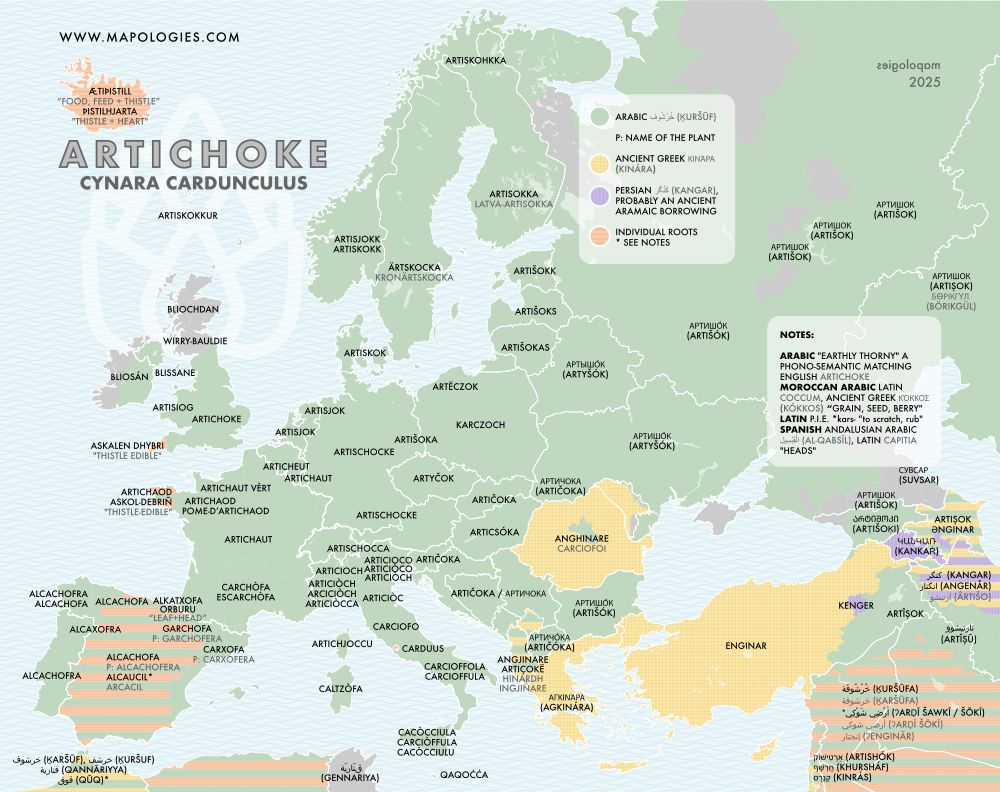
Share & comment to improve our blog:
www.mapologies.com
Support us:
http://ko-fi.com/mapologies
#language 📞 #tvseries 📺 #etymology 🐣 #geography 🌐 #maps 🗺 #history ⏰️ #cartoo

ko-fi.com/mapologies
mapologies.com/roots

mapologies.com/roots
mapologies.com/animals/

mapologies.com/animals/
mapologies.com/spices

mapologies.com/spices
mapologies.com/cartoons/

mapologies.com/cartoons/
This situation must have been fairly common in the past, since the etymological origin of the French word for “duck” (canard or cane) comes from a Proto-Germanic term meaning boat or vessel.
mapologies.com/animals/

This situation must have been fairly common in the past, since the etymological origin of the French word for “duck” (canard or cane) comes from a Proto-Germanic term meaning boat or vessel.
mapologies.com/animals/
mapologies.com/flowers/

mapologies.com/flowers/
mapologies.com/cereals/

mapologies.com/cereals/
mapologies.com/el-atlas/#Pu...

mapologies.com/el-atlas/#Pu...

mapologies.com/fruits/

mapologies.com/fruits/
mapologies.com/spices/

mapologies.com/spices/
mapologies.com/flowers

mapologies.com/flowers
mapologies.com/nuts

mapologies.com/nuts
mapologies.com/time/

mapologies.com/time/
mapologies.com/el-atlas

mapologies.com/el-atlas
www.maplogies.com/cereals

www.maplogies.com/cereals
mapologies.com/animals/
#animal #etymology #etymologymap #languages

mapologies.com/animals/
#animal #etymology #etymologymap #languages
mapologies.com/cereals/

mapologies.com/cereals/
mapologies.com/animals/

mapologies.com/animals/
mapologies.com/herbs

mapologies.com/herbs
mapologies.com/flowers/

mapologies.com/flowers/
mapologies.com/el-atlas
#map #mapologies #armadillo #tatu #armour #armed #animal #etymology #animal #mamal #spanish #languages

mapologies.com/el-atlas
#map #mapologies #armadillo #tatu #armour #armed #animal #etymology #animal #mamal #spanish #languages
The second root comes from the Greek khartes (χάρτης), meaning “papyrus”. This root is found in English words like chart or card.
mapologies.com/map-carte/

The second root comes from the Greek khartes (χάρτης), meaning “papyrus”. This root is found in English words like chart or card.
mapologies.com/map-carte/
mapologies.com/film/

mapologies.com/film/
More maps:
mapologies.com/flowers/

More maps:
mapologies.com/flowers/

